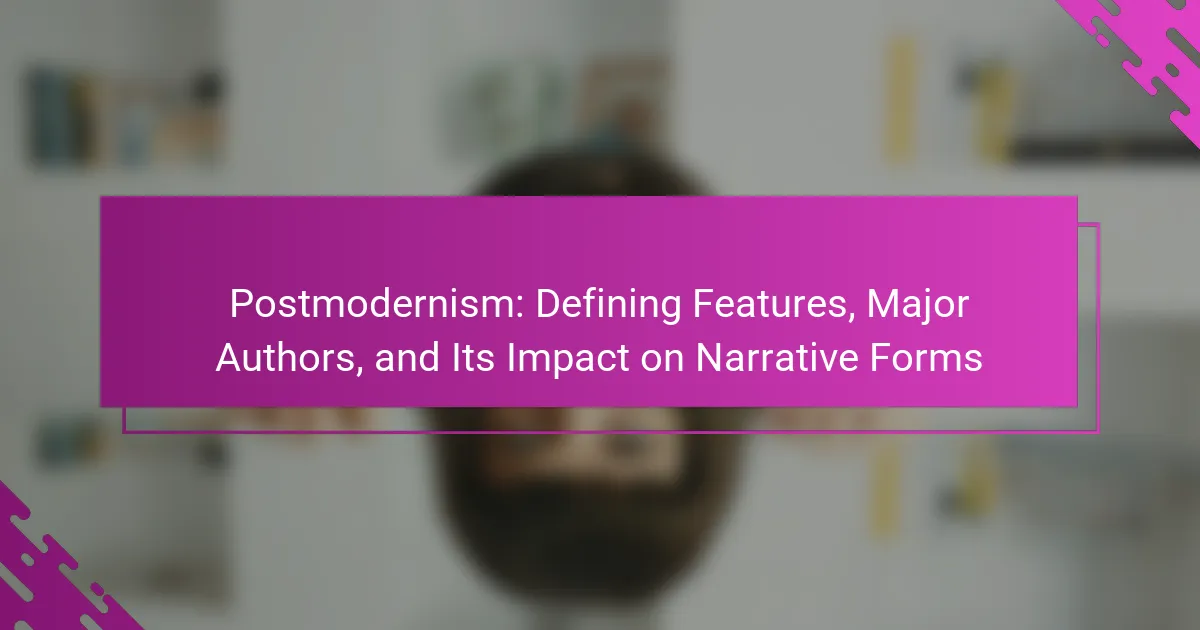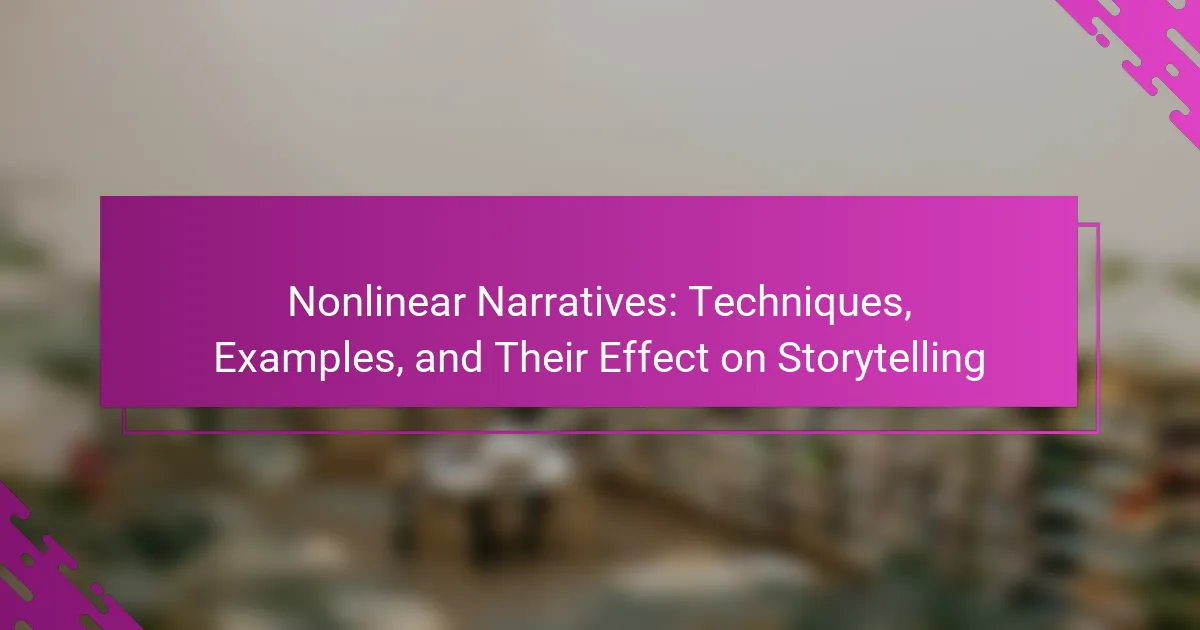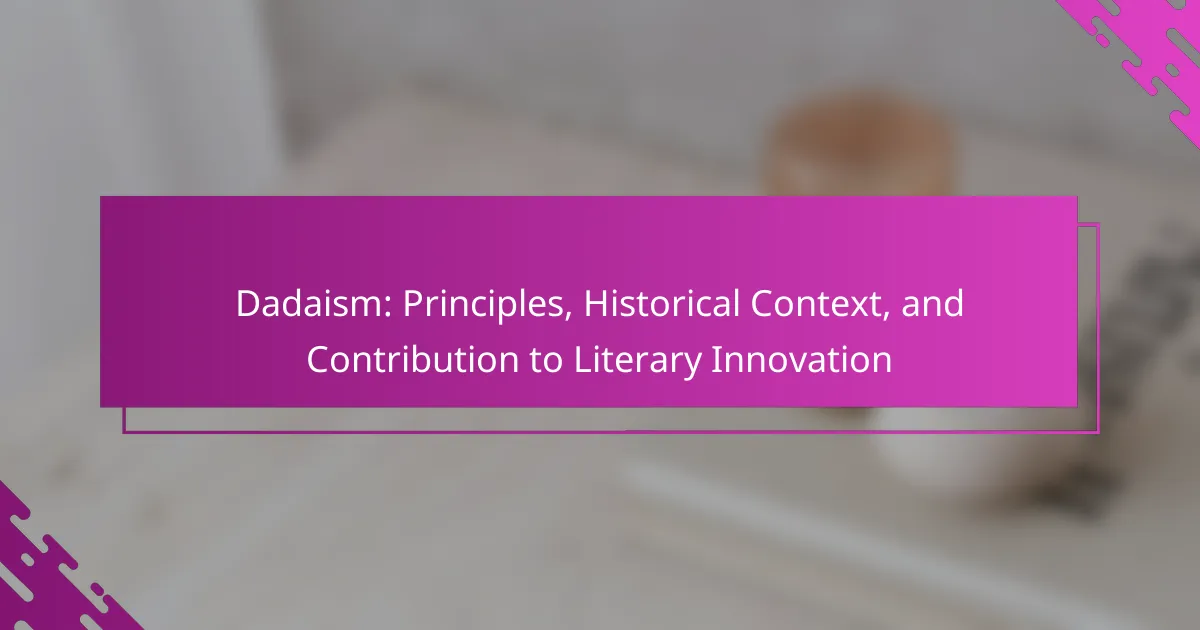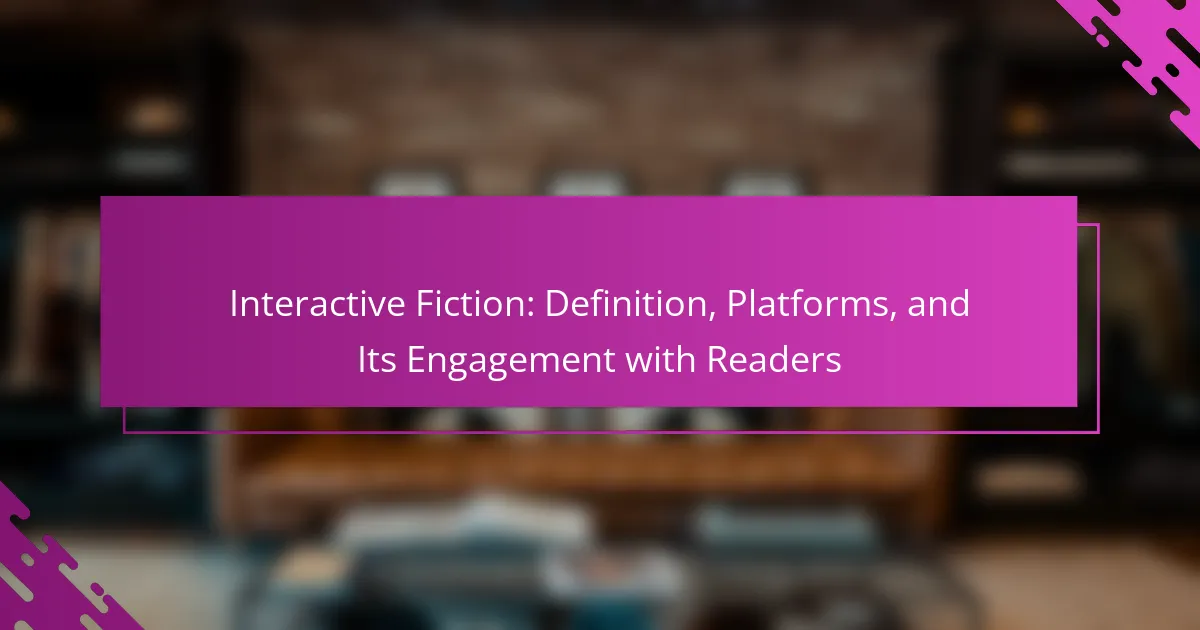Metafiction challenges traditional narrative structures by questioning storytelling conventions and blurring the lines between fiction and reality. This article explores key examples of metafiction, examines its psychological effects on readers, and discusses the challenges writers face when employing this genre. Additionally, it highlights how metafiction intersects with postmodernism, inviting a deeper engagement with the act of reading. Readers will gain insights into the complexities and techniques that define metafictional works.
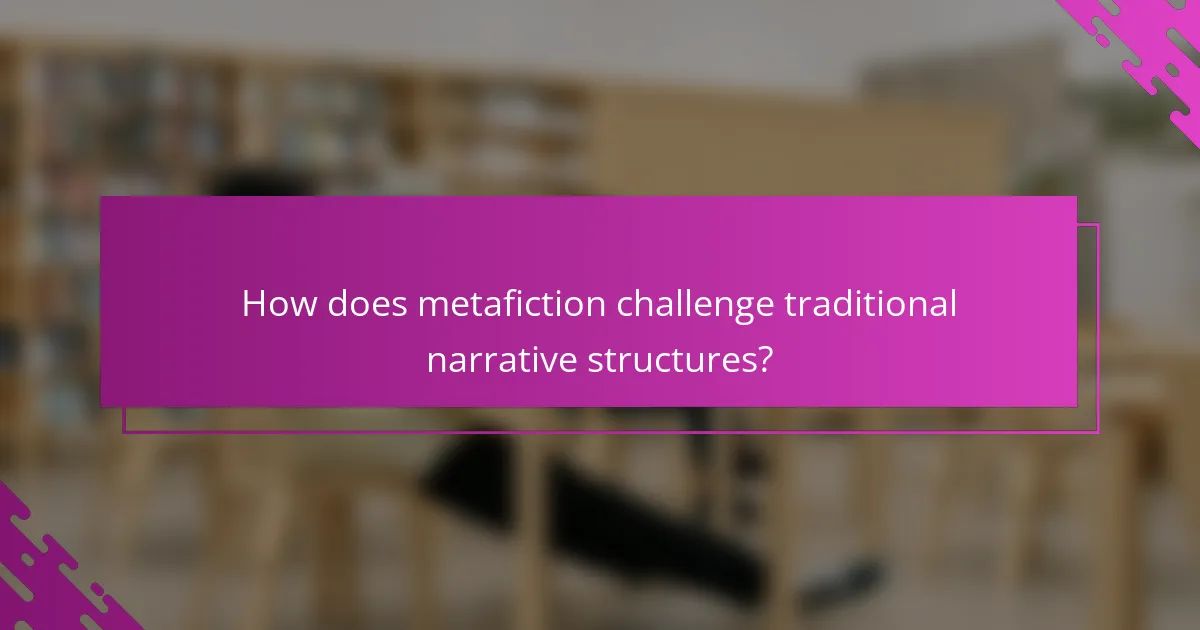
How does metafiction challenge traditional narrative structures?
Metafiction challenges traditional narrative structures by self-referentially questioning storytelling conventions. It disrupts linear plots, blurs the boundaries between fiction and reality, and invites readers to engage critically with the text. This genre often employs techniques like unreliable narrators and fragmented narratives, emphasizing the artifice of storytelling. By doing so, metafiction encourages a deeper exploration of the nature of fiction itself, prompting readers to reconsider their perceptions of narrative truth and authorial authority.
What are the key characteristics of metafiction?
Metafiction is characterized by self-referentiality, blurring the line between fiction and reality, and exploring narrative structure. It often includes commentary on the writing process, challenges traditional storytelling, and invites readers to question the nature of fiction. Unique attributes include its ability to disrupt linear narratives and engage readers in a dialogue about the text itself. Examples include works like “If on a winter’s night a traveler” by Italo Calvino and “The French Lieutenant’s Woman” by John Fowles.
Why is metafiction significant in contemporary literature?
Metafiction is significant in contemporary literature because it challenges traditional narrative structures and invites readers to question the nature of storytelling. By blending fiction with self-referential elements, metafiction creates a unique reading experience that emphasizes the constructed nature of narratives. This genre encourages critical thinking and reflection on the relationship between reality and fiction, enhancing literary engagement. Notable examples include “If on a winter’s night a traveler” by Italo Calvino and “The French Lieutenant’s Woman” by John Fowles, both of which showcase metafiction’s ability to disrupt conventional storytelling.
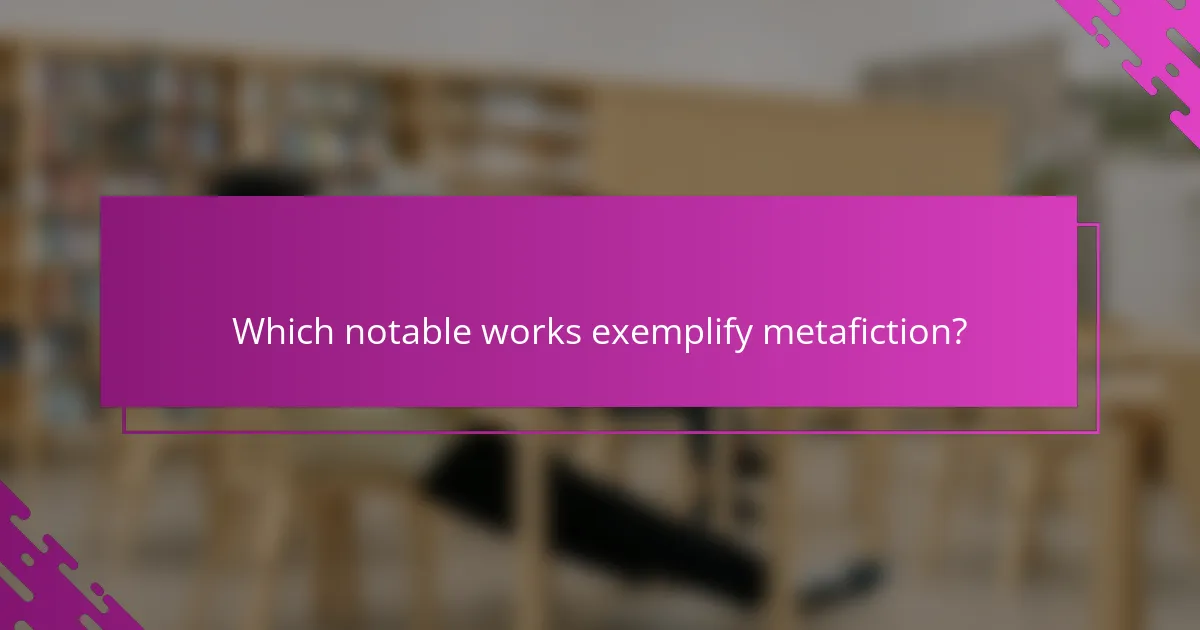
Which notable works exemplify metafiction?
Notable works that exemplify metafiction include “If on a winter’s night a traveler” by Italo Calvino, “The French Lieutenant’s Woman” by John Fowles, and “Slaughterhouse-Five” by Kurt Vonnegut. These texts challenge traditional narratives by self-referencing and exploring the nature of storytelling itself. They invite readers to reflect on the act of reading and the construction of fiction.
How do authors like Italo Calvino utilize metafiction?
Authors like Italo Calvino utilize metafiction to challenge traditional narratives by blurring the lines between fiction and reality. Calvino’s works often feature self-referential elements, inviting readers to reflect on the nature of storytelling. For example, in “If on a winter’s night a traveler,” he constructs a narrative that acknowledges its own artifice, leading readers to question their engagement with the text. This technique highlights the fluidity of narrative forms and encourages a deeper exploration of the reader’s role in the creation of meaning. Metafiction serves as a tool for authors to engage with philosophical questions about existence and perception, ultimately enriching the literary experience.
What role does metafiction play in the works of Jorge Luis Borges?
Metafiction in Borges’ works challenges traditional narratives by blurring the line between fiction and reality. His stories often reflect on the nature of storytelling itself, inviting readers to question the boundaries of narrative. For instance, in “Tlön, Uqbar, Orbis Tertius,” Borges creates a fictional universe that critiques the concept of objective reality. This unique approach emphasizes the constructed nature of narratives and the role of the reader in interpreting meaning. Borges’ metafictional techniques encourage a deeper engagement with texts, making the act of reading an exploration of existence and perception.
How is metafiction represented in modern digital media?
Metafiction in modern digital media often challenges traditional narratives by self-referential techniques and interactive storytelling. It blurs the line between fiction and reality, engaging audiences through platforms like video games, blogs, and social media. For example, video games such as “The Stanley Parable” use player choice to comment on narrative structure, while online platforms allow authors to break the fourth wall. This representation encourages viewers to reflect on the nature of storytelling itself, making them active participants in the narrative.

What are the psychological effects of metafiction on readers?
Metafiction can provoke various psychological effects on readers, such as increased self-awareness and critical thinking. By breaking the fourth wall, metafiction challenges readers to reflect on their own perceptions of reality and narrative. This can lead to a deeper understanding of storytelling and its constructs. Additionally, metafiction often elicits emotional responses by blurring the lines between fiction and reality, prompting readers to engage more actively with the text. This engagement can enhance their overall reading experience, making it more introspective and thought-provoking.
How does metafiction alter readers’ perceptions of reality?
Metafiction challenges readers’ perceptions of reality by blurring the line between fiction and reality. It invites readers to question the nature of storytelling and their role in interpreting narratives. This self-referential technique often highlights the artificiality of narrative forms, prompting readers to reflect on the constructs of their own realities. Through key examples like “If on a winter’s night a traveler” by Italo Calvino, metafiction reveals how narratives shape understanding and perception. As a result, readers become more aware of the subjective nature of reality and the influence of narrative structure on their interpretations.
Why do some readers prefer metafiction over traditional narratives?
Readers often prefer metafiction because it challenges conventional storytelling, prompting deeper engagement. This genre invites self-reflection on the nature of fiction, blurring the lines between reality and narrative. Metafiction’s unique attribute lies in its self-awareness, allowing readers to question authorship and narrative structure. As a result, this form of literature often resonates more with those seeking innovative and thought-provoking experiences.
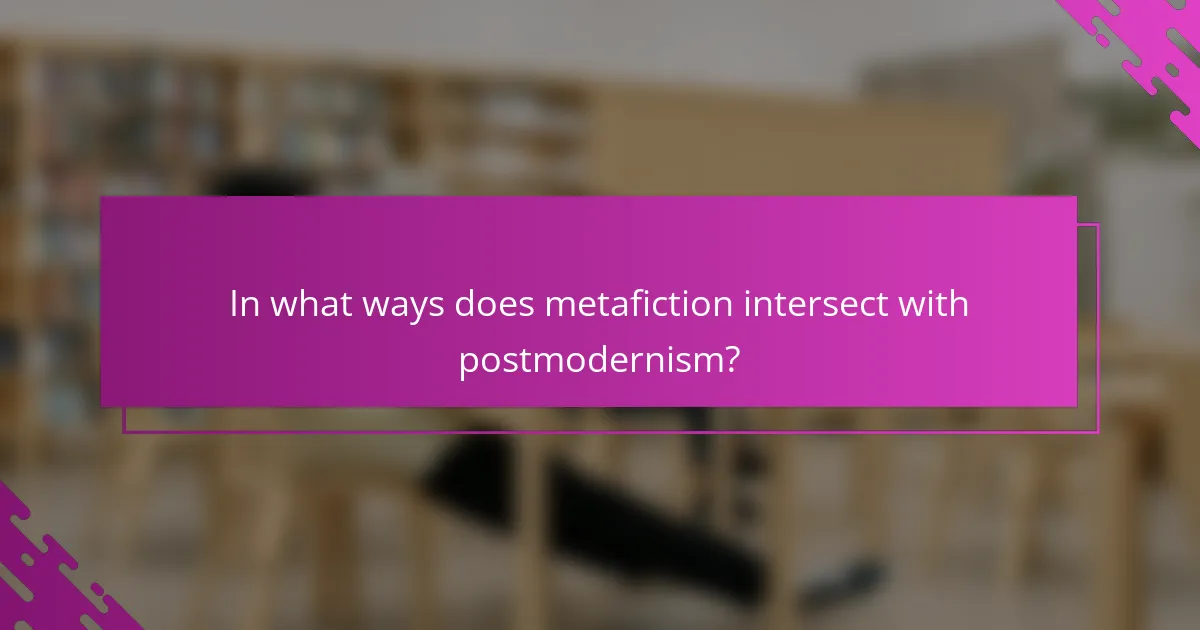
In what ways does metafiction intersect with postmodernism?
Metafiction intersects with postmodernism by challenging traditional narrative structures and emphasizing self-referentiality. Both movements question the nature of reality and representation in literature. Metafiction often blurs the lines between fiction and reality, reflecting postmodernism’s skepticism towards grand narratives. Key examples include works like “If on a winter’s night a traveler” by Italo Calvino, which showcases this interplay. The unique attribute of metafiction lies in its ability to engage readers in a dialogue about the act of reading itself, a hallmark of postmodern thought.
What common themes link metafiction and postmodernist literature?
Metafiction and postmodernist literature share themes of self-reference, narrative fragmentation, and skepticism about reality. Both challenge traditional storytelling by questioning authorship and blurring boundaries between fiction and reality. Metafiction often employs techniques like unreliable narrators and intertextuality, which are common in postmodernist works. This interplay creates a complex reading experience that reflects on the nature of storytelling itself.
How do cultural contexts influence the interpretation of metafiction?
Cultural contexts significantly shape how metafiction is interpreted. Different cultures bring unique perspectives and values that influence readers’ understanding and engagement with metafictional elements. For instance, Western cultures may focus on individualism and self-reflexivity, while Eastern cultures might emphasize collective narratives and intertextuality. This variation can lead to diverse interpretations of metafictional techniques, such as breaking the fourth wall or questioning narrative authority. Additionally, cultural familiarity with metafictional conventions can affect how effectively they resonate with audiences, shaping their experience and comprehension of the text.
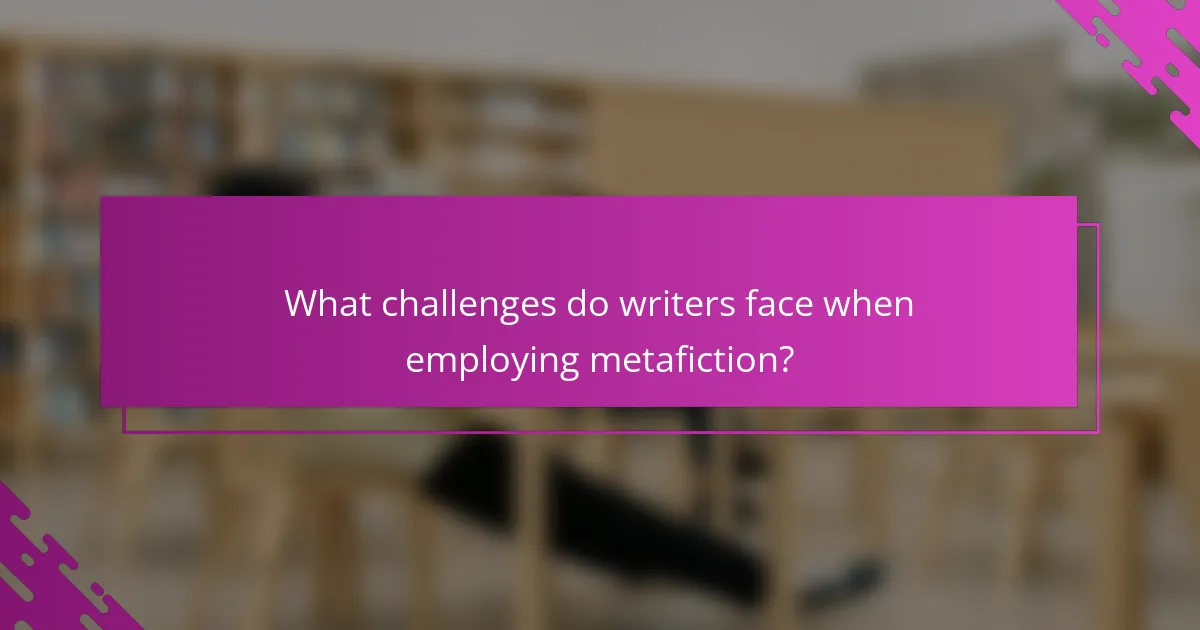
What challenges do writers face when employing metafiction?
Writers face various challenges when employing metafiction, including reader confusion and narrative coherence. Metafiction often blurs the lines between fiction and reality, leading to potential misunderstandings. Additionally, maintaining a balance between self-reflection and plot progression can be difficult. Writers must also consider audience expectations, as metafictional techniques may alienate traditional readers. Finally, the complexity of intertwining multiple layers of narrative can hinder the overall impact of the story.
How can metafictional techniques be effectively integrated into storytelling?
Metafictional techniques can be effectively integrated into storytelling by self-referentially exploring the narrative structure. This approach allows authors to challenge readers’ perceptions of reality and fiction. Techniques such as breaking the fourth wall, incorporating authorial commentary, and using unreliable narrators enhance engagement and provoke thought. For example, works like “If on a winter’s night a traveler” by Italo Calvino exemplify this by directly addressing the reader and questioning the nature of storytelling. These methods invite readers to reflect on the act of reading itself, creating a layered narrative experience.
What are common pitfalls to avoid in metafiction writing?
Common pitfalls in metafiction writing include excessive self-reference, which can alienate readers. Overcomplicating the narrative structure may confuse rather than engage. Failing to balance metafictional elements with a compelling story can lead to disengagement. Neglecting character development diminishes emotional investment. Lastly, using metafiction as a gimmick rather than a meaningful tool may undermine the narrative’s depth.
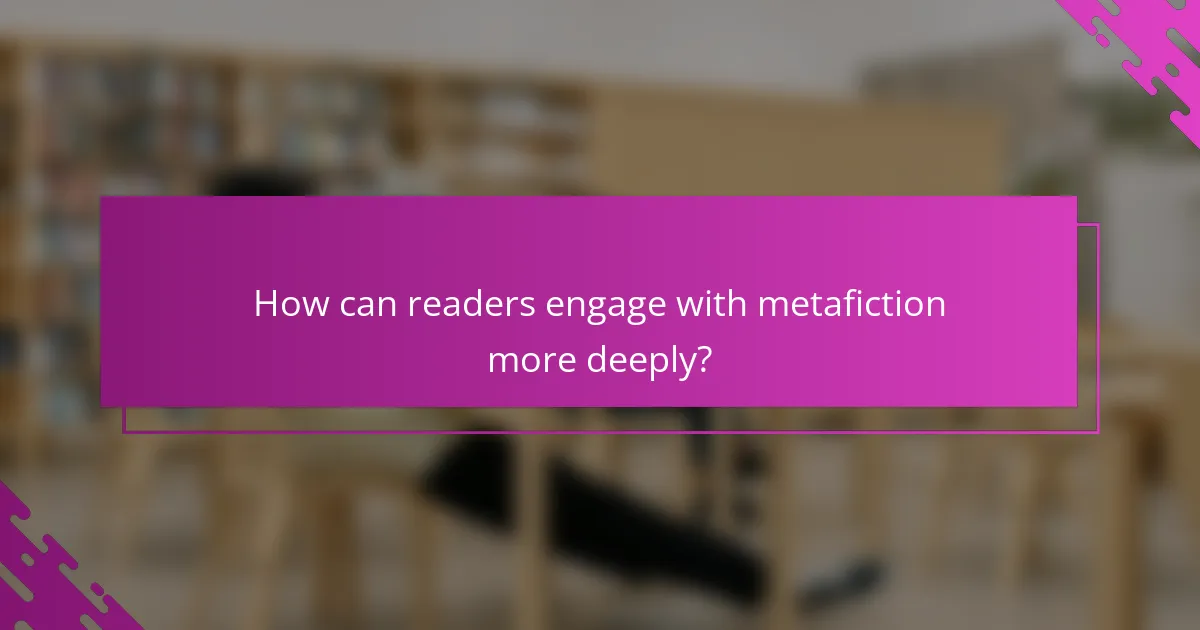
How can readers engage with metafiction more deeply?
Readers can engage with metafiction more deeply by actively questioning narrative structures and recognizing self-referential elements. Analyzing how metafiction challenges traditional storytelling enhances understanding. Engaging with key examples, such as works by Italo Calvino or Jorge Luis Borges, reveals deeper layers of meaning. Participating in discussions about metafictional techniques fosters critical thinking and appreciation for the genre’s complexities.
What strategies enhance the understanding of metafictional texts?
Engaging with metafictional texts requires strategies that highlight their self-referential nature. Close reading enhances awareness of narrative techniques, while discussions encourage diverse interpretations. Analyzing authorial intent reveals how metafiction challenges traditional storytelling. Creative responses, such as writing metafiction, deepen understanding by fostering personal connections to the text.
Which resources are recommended for exploring metafiction further?
To explore metafiction further, consider these resources. These books and articles provide insights into metafiction’s characteristics and its role in literature.
1. “If on a Winter’s Night a Traveler” by Italo Calvino
2. “The French Lieutenant’s Woman” by John Fowles
3. “Pale Fire” by Vladimir Nabokov
4. “The Unbearable Lightness of Being” by Milan Kundera
5. “Metafiction: The Theory and Practice of Self-Conscious Fiction” by Patricia Waugh
6. “The Art of Fiction” by John Gardner
What best practices can writers adopt when experimenting with metafiction?
Writers experimenting with metafiction should embrace self-reflexivity, challenge narrative conventions, and engage readers’ awareness. They can adopt techniques like breaking the fourth wall, incorporating authorial commentary, and using unconventional structures. These practices deepen the exploration of fiction’s nature and enhance reader interaction.
